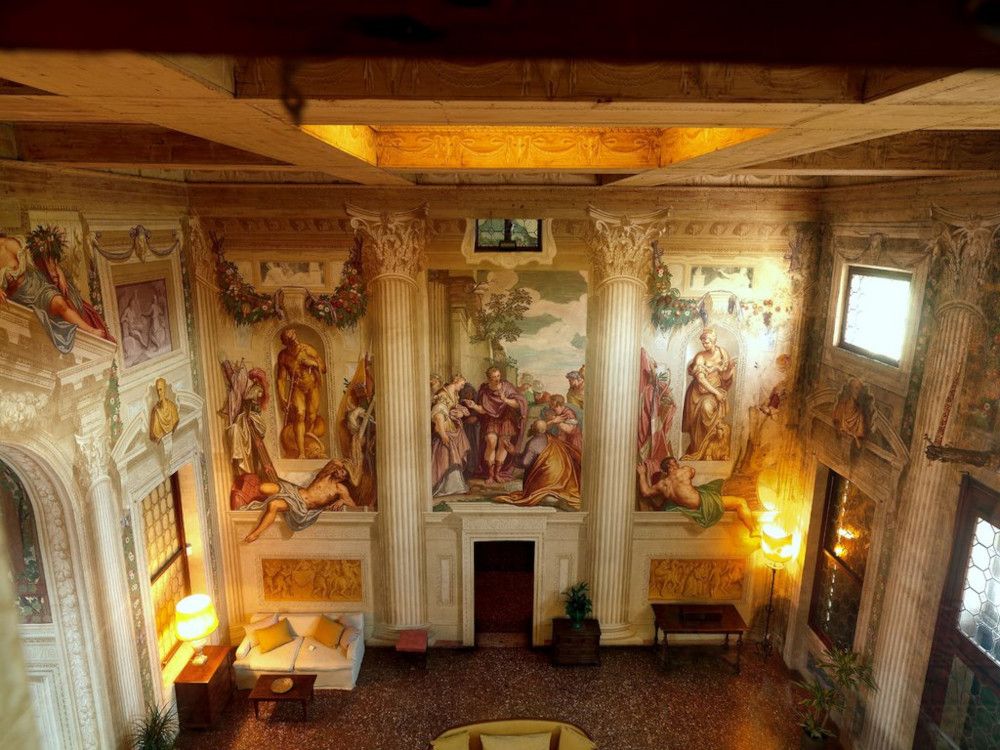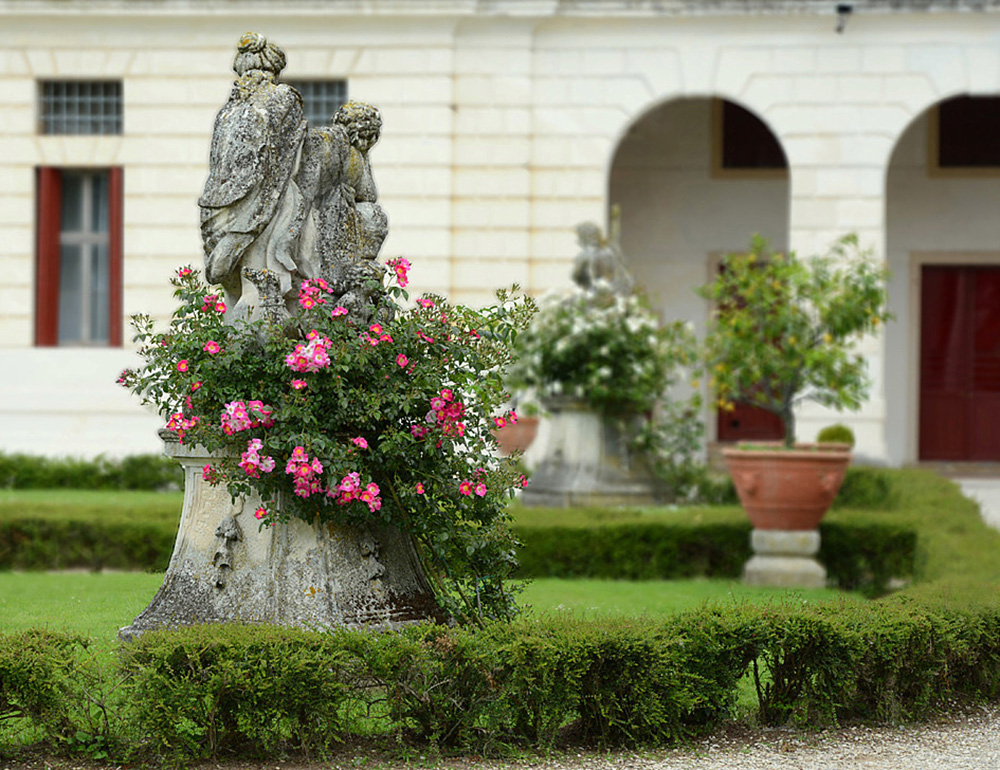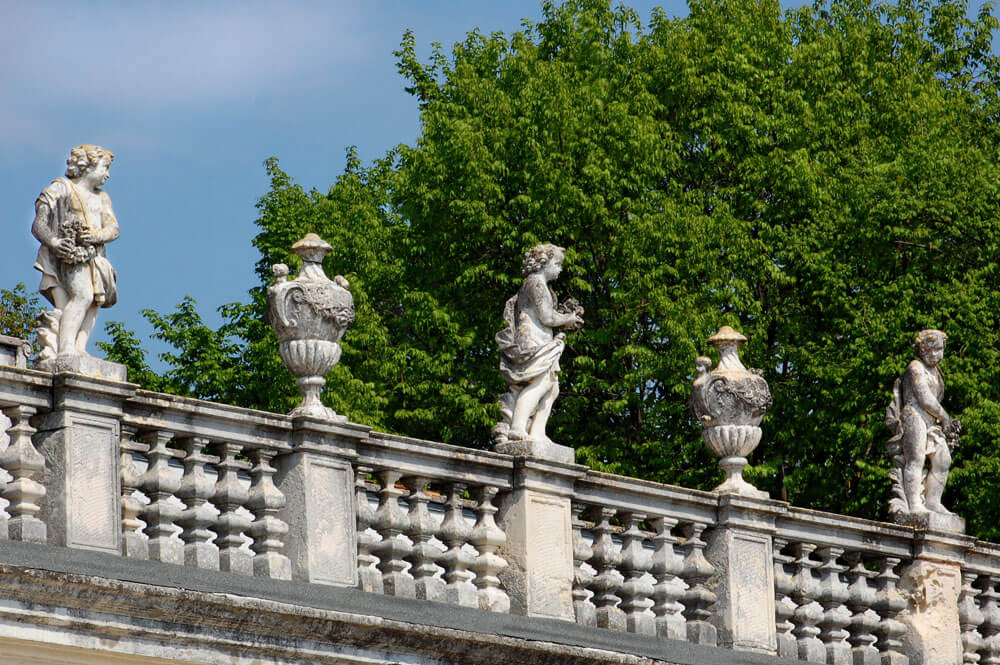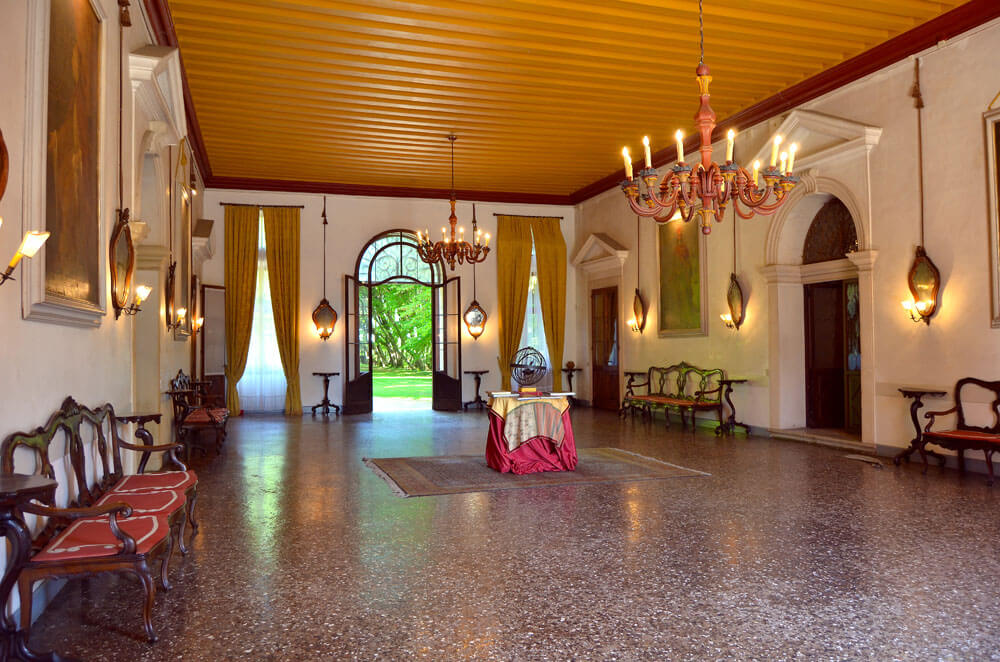The Venetian Villas – 2 days itinerary
Introduction
Widely respected as one of the most important architects of the Western world, Andrea Palladio (1508-1580) was a practitioner whose work has continued to resonate down five centuries. The Venetian Villas are his best-known masterpiece. Situated in the Veneto region, these homes were designed for important and noble families of Venice and Vicenza who recognized Palladio’s architectural talent and were looking to acquire a sumptuous building to which they could escape during the summer months or, in many cases, which they could use as a practical working farm. Today, some of these villas, a few still privately owned, can be visited much as they were five centuries ago. The selection we propose sweeps the visitor into the magic of the Venetian Renaissance , enjoying these outstanding architectures, their period furniture and marvelous frescoed interiors, as well as some enchanting centuries-old parks.
Tickets and fares
The following itinerary is a simple suggestion and is only available for groups of more than 20 people.
Opening times for each villa can be checked at this link.
Tickets must be purchased in advance for each villa.
It is advisable to rely on a guide for the organization of the itinerary.
Day 1 program
1. Ca’ Marcello
ADDRESS: Levada di Piombino Dese (PD) | Visit to the house and the gardens – 90 mins.
Built in the 16th century, this is one of the most beautiful and well-maintained examples of Palladian style villas. It is still lived in by some descendants of the noble Venetian Marcello family and it contains all the original 18th century furniture. Count Marcello will guide you through a visit of the centuries-old park – which contains long rows of old trees, statues, a large fish pond and a “colombaia” tower – and then in the interiors, through splendid living rooms, bedrooms and a ballroom with fresco paintings by G.B. Crosato and incredibly beautiful stucco works.
Our guests can conclude the visit at Ca ‘Marcello with refreshments or a private lunch, inside the house or in the park, as follows:
A. Private lunch, buffet style or seated and served, with different 4 courses menu choices
B. “Merenda” or light buffet with typical Venetian specialties
C. Light refreshments with sweet and salty pastry
2. Villa Emo
ADDRESS: Fanzolo di Vedelago (TV) | Visit to the house – 60 mins.
Villa Emo offers a synthetic and emblematic picture of the Palladian architecture. Built by Andrea Palladio in 1558 for Leonardo Emo’s account and designed on the grid of the Roman centuriation, with its long stone ramp and the symmetric barchesse, it dominates the monumental complex of the park, of the rustic outline buildings and of the lands where the plantation of corn had its start. The clean austerity of the Doric order of the façade blends with the beauty of the rich internal decorative scenery, a work by Gianbattista Zelotti.
3. Villa di Maser
ADDRESS: Maser (TV) | Visit to the house and to the carriages collection – 60 mins.
Designed by Andrea Palladio in 1550 and decorated with the cycle of frescoes by Paolo Veronese and the stuccos by Alessandro Vittoria, it is one of the masterpieces of XVI century Venetian art. The Villa is surrounded by the green of its vineyards and by continuing its wine production it keeps alive the old tradition of the “villa farm”. In 1996 the Villa, which is now the owners residence, was inscribed on the World Heritage list by UNESCO. In one of the adjoining buildings there is an interesting Collection of Carriages.
Wine tasting of Villa di Maser estate’s wines is available. Carriage Collection open from March to October. Visits to the villas allowed to a maximum of 25 people at a time every 30 minutes. Group visits available every day except on Tuesdays, Saturdays and Sunday afternoons.
Day 2 program
4. TEATRO OLIMPICO
ADDRESS: Vicenza | Visit to the theater – 40 mins.
The Teatro Olimpico, the last work of Andrea Palladio, came to an end after his death and reworks the structure of the Roman theater described by Vitruvius. It is the first indoor masonry theater in the world, decorated with wood, stucco and plaster. Inside you can admire the famous stage by Vincenzo Scamozzi.
5. PALLADIO MUSEUM – PALAZZO BARBARAN DA PORTO
ADDRESS: Vicenza | Visit to the palace – 60 mins.
This building is the only large city palace that Andrea Palladio was able to fully complete. The result was a sumptuous residence that allowed the commissioner to represent himself in the city as a leading exponent of the cultural elite of Vicenza. Since October 2012, the building is housing the Palladio Museum, the first museum dedicated to the figure of Andrea Palladio. The exhibition displays the life of the genius, his construction techniques, the history of its patrons but also offers an overview on life and culture of the sixteenth century.
6. VILLA VALMARANA AI NANI
ADDRESS: Vicenza | Visit to the house – 60 mins.
Villa Valmarana ai Nani is a marvellous architectonic and artistic complex situated in a large XVIII century park, including the Palazzina (1669), the Foresteria (the guesthouse) and the stables (1720). The villa is also called “The House of the Dwarves” due to the 17 stone-statues of dwarves standing on the boundary wall. The Valmarana family still lives in this villa, whose frescoes by Giambattista and Giandomenico Tiepolo are universally recognized as one of the supreme expressions of the XVIII century and as the evidence of Tiepolo’s genius.
Visitors travelling by bus need to walk 150 meters to reach the entrance of the villa.
7. VILLA ALMERICO CAPRA ‘LA ROTONDA’
ADDRESS: Vicenza | Visit to the house – 45 mins.
This magnificent villa lays on the top of a hill, where the Riviera Berica starts to take shape. Each façade is embellished with a classical portico that seems to push itself by centrifugal force to the surrounding landscape. The decoration of the building is magnificent, with speeches by Lorenzo Rubini and Giambattista Albanian (statues), Anselmo Canera, Bernardino India, Alexander Maganza and later Louis Dorigny (pictorial devices). Remarkable is also the park, romantic setting, which opens to views of cultivated land all around.
From April to October: Tuesday, Thursday, Friday and Sunday only the outdoors can be visited, while on Wednesday and Saturday are open to visitors both external and internal spaces. From November to March: only external.
























